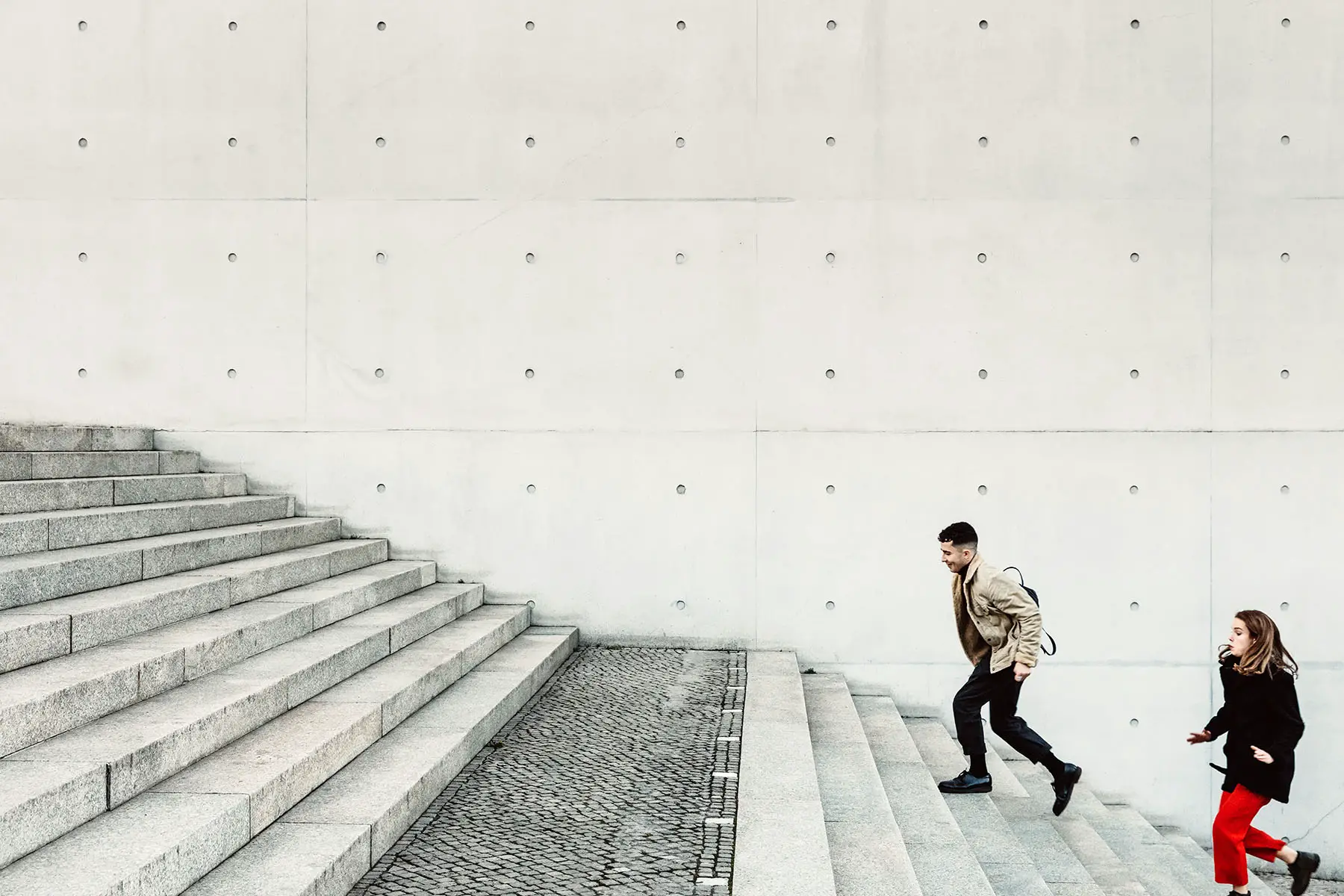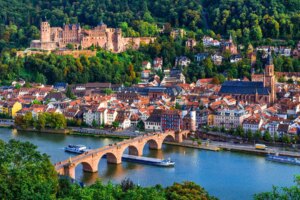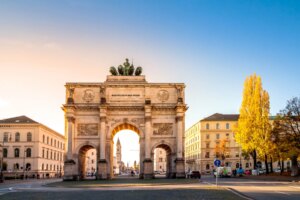Home to Porsche and the Mercedes-Benz Group, Stuttgart is the economic motor of the south and home to many expats who have relocated there for work. Whether you like a rich cultural scene, a strong sense of community, or stunning nature escapes – this city truly has something for everyone.
Discover which of Stuttgart’s many neighborhoods could be your new home by reading the following:
Spotahome
Looking for somewhere to rent in Germany? Spotahome takes the hassle out of househunting by doing the hard work for you. Their online platform lets you find, view, and book rental properties all from the comfort of your own home. Take the stress out of househunting in Germany with Spotahome.
Why move to Stuttgart?
Stuttgart is the state capital of Baden-Württemberg, located in the southwest of Germany. Surrounded by valleys, hills, rivers, and vineyards, it’s considered one of the most picturesque cities in the country and offers plenty of opportunities for green living.
Stuttgart’s history goes back to a Roman settlement in the 1st century BCE. The city’s name is a little less old, originating from the Old High German word stuotgarten (or stud farm), stud meaning horse.
Funnily enough, Stuttgart is known as Germany’s “cradle of the automobile,” where both Porsche and Mercedes-Benz have their headquarters. In that sense, the ‘horsepower’ tradition is still going strong.

The state capital has a population of over 630,000. Despite its relatively small size, Stuttgart is one of Germany’s larger economic hubs and is home to tech firms such as Hewlett-Packard, Bosch, and IBM. It’s perhaps understandable, then, that Stuttgart is one of two major cities in Germany (the other being Munich) where the cost of living is the most expensive.
However, the high price tag does come with a relatively high quality of living. According to the 2024 Mercer Cost of Living Index, Stuttgart is the seventh most liveable city in Germany and the 46th most liveable in the world. Crime rates are low, work-life balance is great, and there are plenty of green spaces where residents can get their fill. There’s also a rich cultural scene and a strong sense of community among its residents.
Stuttgart’s culinary stage is another highlight, with a wide range of options for local and international cuisine. The nearby vineyards also make it easy to enjoy the taste of one of the oldest wine-growing regions in Germany.
From a social perspective, Stuttgart is generally inclusive and progressive. The state capital hosts various cultural events throughout the year, including the African Festival (Afrika-Festival Stuttgart), Stuttgart Pride, and Summer Festival of Cultures (Sommerfestival der Kulturen). It has also designed key infrastructure, such as the public transit system, to be accessible to people with disabilities.
How to find housing in Stuttgart
Since the Stuttgart real estate market is competitive, it can take some time to find a suitable place. As such, it’s best to start your housing search as early as you can – ideally before moving to the city.

Just like most cities, your search for a place to live will most likely begin online. Some of the best online portals for renting and buying properties in Stuttgart are:
- HC24 (for temporary stays)
- HousingAnywhere
- Immonet
- ImmoScout24
- Immowelt
- Nestpick
- SMARTments (for students)
- Studierendenwerk (for students)
Alternatively, you can use a German real estate agent (makler) to find a place in Stuttgart. In any case, it’s recommended you join a local Reddit group to connect with others and get tips and first-hand knowledge about relocating to the city.

Writer
Gary Buswell
Insider tip
You must register your address with the German authorities within 14 days of moving to Stuttgart.
Typical accommodation in Stuttgart
Stuttgart has a varied mix of houses, from modern new-builds to centuries-old barn conversions. Most apartments are in low-rise buildings.
Living space in the state capital is among the smallest in Germany’s major cities. Residents have around 37.6 square meters on average, compared to the national average of 47.7 square meters.

However, there are plenty of larger properties with private backyards or balconies. Plus, the close proximity of city-center apartments to public parks like the many Schlossgartens (Castle Gardens) make up for the lack of private outdoor spaces.
What are the renting options in Stuttgart?
Stuttgart’s rental market consists of privately owned properties and subsidized social housing options. Due to the high real estate costs, renting (miete) is a popular choice for expats looking to move to the city.
Although good rentals are in high demand and Stuttgart’s rental prices are slightly higher than the German average, the city is striving to make housing more affordable. For example, the Stuttgarter Wohnungs- und Städtebaugesellschaft (SWSG) offers and creates affordable housing for low-to-middle-income households throughout the city. Renters with low incomes can also benefit from a housing subsidy (wohngeld).
What if you want to buy property in Stuttgart?
There’s both good news and bad news for potential homeowners in Stuttgart.
After a decade-long house price boom, German real estate prices are in freefall (2024). The housing market is struggling as higher mortgage interest rates and rising inflation have increased affordability constraints. Likewise, if you’re employed, you should be able to get a mortgage with no additional requirements – regardless of your nationality.
That said, Germany is still one of the OECD countries with the highest house price-to-rent ratios. On average, you’ll pay €4,400 per square meter for an apartment (2023). This price is somewhat comparable to Germany’s capital, Berlin, where the square meter price is €4,802.
Stuttgart’s districts and neighborhoods
Stuttgart has 23 districts (stadtbezirke) and an impressive 152 neighborhoods, each with its own unique character and charm. All are within reasonably easy reach thanks to the city’s public transport system.
Better still, the city is pretty bicycle-friendly and has an extensive network of cycling lanes that allow you to reduce your carbon footprint even further.
Keep reading for a closer look at some of the best neighborhoods in Stuttgart for expats.

Stuttgart-Mitte
Situated in the heart of the city, Stuttgart-Mitte is a dynamic district that perfectly balances urban buzz with cultural charm. As the city’s central neighborhood, it’s a hub for retail shopping, dining, and entertainment. Its streets are lined with trendy cafes, stylish bars, and iconic nightlife venues, making it a favorite among students, professionals, and culture enthusiasts alike.
The district is known for its iconic landmarks, such as Schlossplatz and the bustling Königstraße, one of Europe’s longest main shopping streets. Stuttgart-Mitte is also where you’ll find the city’s cultural gems, including the Friedrichsbau Varieté Show Theater, the State Art Gallery (Staatsgallerie), and the State Opera (Staatsoper Stuttgart).
Another part of the appeal is its green spaces. The expansive Schlossgarten offers a peaceful escape from the city’s energy, with plenty of places for jogging, picnicking, or just soaking up the sun.
In terms of practical amenities, Stuttgart-Mitte has excellent public transport links, with U-Bahn and S-Bahn stations connecting residents to other parts of the city in minutes. Schools in the area cater to a mix of local and international families, and healthcare facilities are easily accessible.
Why you should move to Stuttgart-Mitte
Those looking for a central, vibrant neighborhood with a touch of history and culture will find that Stuttgart-Mitte is the perfect place to call home.
Stuttgart-Nord
Stuttgard-Nord is one of the most sought-after neighborhoods and probably the most family-friendly of the five inner-city districts. Its landscape ranges from the valley basin to the beautiful hillside areas such as Killesbergpark, where you’ll have some stunning views of the city.

One of the standout features of Stuttgart-Nord is the Killesbergpark, a sprawling park perfect for a leisurely stroll, family outing, or picnic with friends. The park’s landscaped gardens, open spaces, and iconic Killesberg Tower provide breathtaking views over the city, while seasonal festivals and events add to its charm. For a cultural touch, Killesbergpark also hosts outdoor performances and art exhibitions throughout the year.
Of course, the district wouldn’t be complete without some excellent amenities. Stuttgart-Nord boasts some very good schools, healthcare facilities, and local stores, making it a practical choice for families. The nearby European Quarter (Europaviertel) and Milaneo shopping mall also offer a variety of retail, dining, and entertainment options.
Transport connections in Stuttgart-Nord are highly efficient, with U-Bahn and bus lines providing quick access to the city center and surrounding neighborhoods. For those who prefer to commute by car, major roadways are easily accessible, while cyclists can take advantage of the area’s well-maintained bike paths.
Why you should move to Stuttgart-Nord
With its distinctly suburban feel and yet surprisingly central location, Stuttgart-Nord is a neighborhood that appeals to families, professionals, and nature enthusiasts alike.
Stuttgart-Süd
The southernmost of the five inner-city boroughs, Stuttgard-Süd, is one of the most diverse and dynamic city districts, both in terms of its environment and its residents. The charming neighborhood attracts a heady mix of locals, expats, workers, students, and families and is known for its community-driven spirit.
One of the highlights of the district is its unique character, shaped by its blend of old and new. The streets are dotted with stunning Jugendstil buildings, giving it a timeless charm. At the same time, it’s a hub for the city’s creative scene, with art studios, independent shops, and cozy cafes tucked into its lively neighborhoods.

Stuttgard-Süd is also known for its many vineyards and popular festivals, including Marienplatzfest and Heslacher Hocketse, one of the oldest traditional street festivals in the region.
It’s only natural, then, that the neighborhood has a thriving food and drink scene. From traditional Swabian restaurants serving Maultaschen and Spätzle to trendy wine bars and international diners, there’s something for every palate. For home cooks, the weekly farmers’ markets in the area are a great way to stock up on fresh, local produce while soaking in the community vibe.
Why you should move to Stuttgart-Süd
Whether you’re drawn to its creative energy or the close-knit community feel, Stuttgart-Süd is a neighborhood that offers a little bit of everything to everyone.
Bad Cannstatt
Located on the outskirts of the inner city boroughs, Bad Cannstatt is the go-to district for many expats. Lined with cobblestone streets and half-timbered houses, this is one of Stuttgart’s most historic districts.
Bad Cannstatt is famous for its healing mineral springs, where residents can enjoy a tranquil escape from city life. Families and animal lovers can also visit the Wilhelma Zoo, a stunning botanical garden and zoo located within the district. Likewise, nature lovers will appreciate the green spaces that surround the area. For example, the Kurpark and Rosenstein Park are perfect for leisurely walks, while the nearby Neckar River offers scenic cycling paths and boat rides.
Festivals are a big part of the district’s identity. Bad Cannstatt is home to the Stuttgart Spring Festival (Frühlingsfest) and the Cannstatter Volksfest, one of the largest beer festivals in Germany. If you are a fan of sports, you’ll also enjoy the close proximity of the Mercedes-Benz Arena, home to the city’s football (soccer) team, VfB Stuttgart.
Practical living in Bad Cannstatt is made easy with its excellent public transport connections, including direct S-Bahn and U-Bahn links to Stuttgart city center. The area is well-served by local schools, healthcare facilities, and shopping options, blending convenience with its distinctive charm.

Why you should move to Bad Cannstatt
Despite being one of the most historical districts in Stuttgart, Bad Cannstatt offers more affordable living prices than the city center and a lifestyle that feels both relaxed and vibrant. It’s especially popular among young families and upwardly mobile professionals.
Degerloch
Perched on a hill overlooking Stuttgart, Degerloch offers a peaceful retreat with stunning views of the city below. This district is known for its village-like charm and family-friendly atmosphere and combines suburban tranquility with easy access to Stuttgart’s bustling center.
Degerloch is a favorite among families and retirees who value green spaces and a quieter lifestyle. The district is surrounded by nature, with forests and vineyards offering plenty of opportunities for hiking, cycling, and outdoor activities. The Waldau sports area is a major highlight, featuring football fields, tennis courts, and trails perfect for fitness enthusiasts.
The neighborhood itself has a welcoming, small-town feel. Degerloch’s quaint center is home to local bakeries, family-owned shops, and cozy cafes. It also boasts a strong sense of community, with weekly markets and local events that bring residents together. Despite its tranquil vibe, Degerloch has excellent amenities, including schools, medical facilities, and a variety of supermarkets and specialty stores.
Getting to and from Degerloch is a breeze, thanks to the U-Bahn and bus services that connect the district to Stuttgart city center in just 10–15 minutes. The Zahnradbahn, Stuttgart’s historic rack railway, also runs through Degerloch, adding a touch of charm to the commute.
Why you should move to Degerloch
Degerloch features affordable properties with nice backyards. With its natural beauty, convenient location, and friendly atmosphere, this district is an ideal choice for those seeking a relaxed yet well-connected lifestyle.
Vaihingen
Nestled in the southwest corner of the city, Vaihingen is the largest of Stuttgart’s districts. Despite being out in the suburbs, it’s one of the city’s economic hubs and offers the perfect balance of a suburban feel with modern amenities.

The district is home to the University of Stuttgart, as well as plenty of co-working spaces, tech hubs, and businesses, attracting students and young professionals alike.
Vaihingen’s charm lies in its accessibility to both nature and urban conveniences. The district boasts plenty of green spaces, such as the idyllic Pfaffenwald forest and the Büsnauer Wiesental nature reserve, where residents can get in touch with nature. Meanwhile, its town center is a hub of activity, with a range of stores, cafes, and restaurants offering respite.
In terms of practical amenities – the family-friendly neighborhood has both public and international schools and childcare facilities. Healthcare is well-covered, with local medical clinics and close proximity to larger hospitals in nearby areas. For retail therapy, residents can head to the Schwabengalerie mall located in the district
Vaihingen is exceptionally well-connected, with a major S-Bahn station providing direct links to Stuttgart city center, the airport, and neighboring areas.
Why you should move to Vaihingen
Housing in Vaihingen is a bit more affordable, so it’s worth checking out if you want to live a well-rounded lifestyle on a budget.
Other neighborhoods to check out
While this article delves into only six of Stuttgart’s neighborhoods, there are plenty of other districts to choose from.

Other districts in Stuttgart include:
- Stuttgart-East – known for its historic charm and cultural diversity, this district offers a vibrant mix of residential neighborhoods with plenty of green spaces
- Stuttgart-West – a bustling area with beautiful historic architecture, Stuttgart-West is ideal for those seeking a lively urban atmosphere
- Birkach – a quiet, family-friendly neighborhood with a village-like feel, perfect for those who value tranquility and green surroundings
- Botnang – surrounded by forests, Botnang offers a peaceful, nature-filled escape while remaining well-connected to the city
- Feuerbach – Feuerbach is a thriving residential and business district with excellent transport links and vibrant community life
- Hedelfingen – nestled by the Neckar River, Hedelfingen combines riverside tranquility with a close-knit neighborhood vibe
- Möhringen – slightly further out than Degerloch, Möhringen offers excellent family living with spacious homes and easy access to central Stuttgart
- Mühlhausen – this district boasts a mix of historic villages and green landscapes, offering a quiet retreat within the city
- Munster – a small but welcoming district, Munster combines affordable living with convenient access to Stuttgart’s city center
- Obertürkheim – located near vineyards and the Neckar River, Obertürkheim is perfect for those who enjoy wine land scenic outdoor activities
- Plieningen – home to the University of Hohenheim, Plieningen blends academic life with a countryside feel and historic charm
- Sillenbuch – with its leafy streets and family-friendly amenities, Sillenbuch offers a suburban oasis close to the city
- Stammheim – known for its quiet, residential character and strong community ties, Stammheim is great for families seeking affordable living
- Untertürkheim – famous for its vineyards and close proximity to Mercedes-Benz headquarters, Untertürkheim offers urban living with modern conveniences
- Wangen – Wangen is a charming district with great natural appeal, including easy access to the Neckar River
- Weilimdorf – a family-friendly district with great schools, parks, and excellent transport links to Stuttgart and beyond
- Zuffenhausen – known as the home of Porsche, this district has industrial significance, residential charm, and solid transport connections
Are there neighborhoods you should avoid in Stuttgart?
Baden-Württemberg has one of the lowest crime rates in Germany, and Stuttgart is one of the safest cities in the country. While there generally aren’t any areas you should avoid, you should keep your wits about you and exercise common sense when walking alone at night or in busy areas.

Stuttgart is also considered a safe city in regard to air quality and pollution. While the German government has implemented strict regulations to keep the local environment in check, you may want to avoid buying a home in certain areas near airports and highways.
If you’re looking for peace and quiet, it’s probably better to avoid the city center (Stuttgart-Mitte). Other than this, some of the further-out suburban districts, such as Stammheim and Zuffenhausen, have smaller expat populations and more pressing need to learn enough German to get by.
Tips on choosing a neighborhood in Stuttgart
Finding out what place is the right one for you will depend on what you are in the market for. Here are a few tips to keep in mind when looking for a home in Stuttgart:
- Safety – how does the neighborhood feel during the day and night?
- Local amenities – how easy is it to access what you need and enjoy? Do the neighborhood schools meet your requirements?
- Transportation – can you get around using your chosen mode of transportation? How long will it take you to commute to work?
- Lifestyle compatibility – are you sporty, social, or seeking serenity? Find out how the neighborhood will suit your personality.
You can also get great advice (and create new friendships) from different expat groups in Stuttgart. For example:
Useful resources
- Stuttgart.de – official city website for Stuttgart
- Stuttgart Tourist – official tourism website for Stuttgart (in German)










